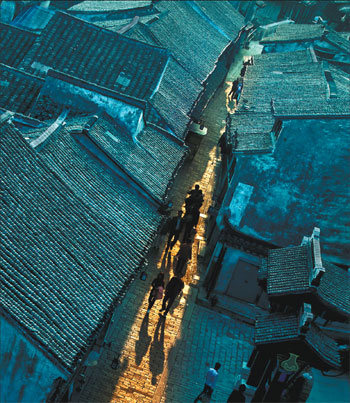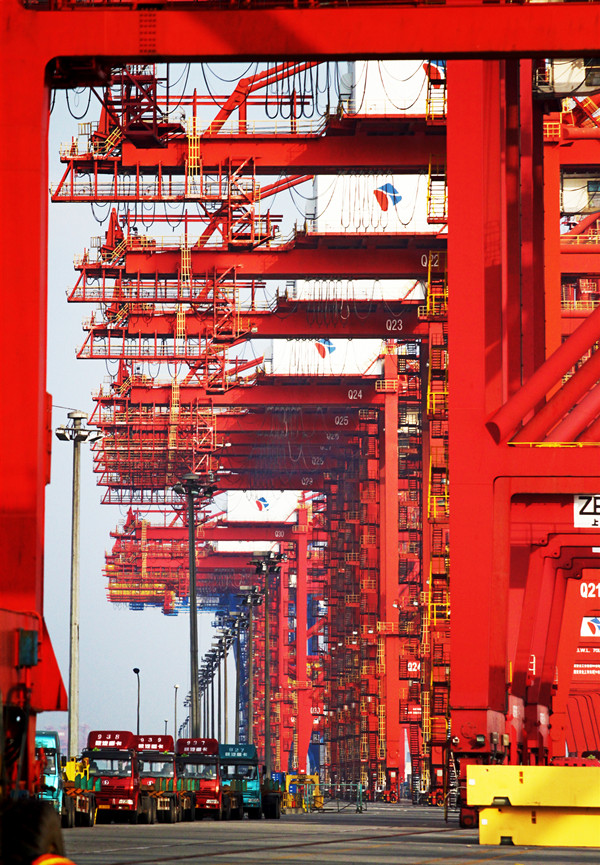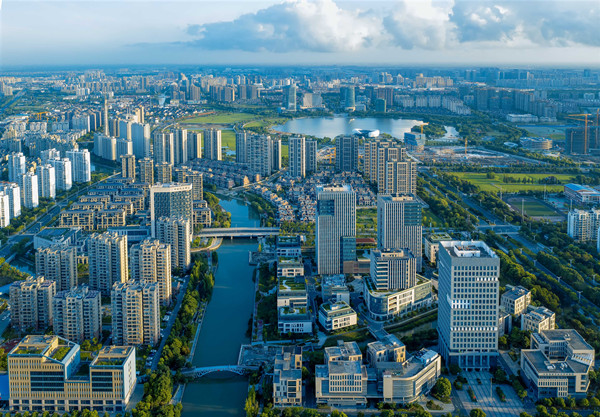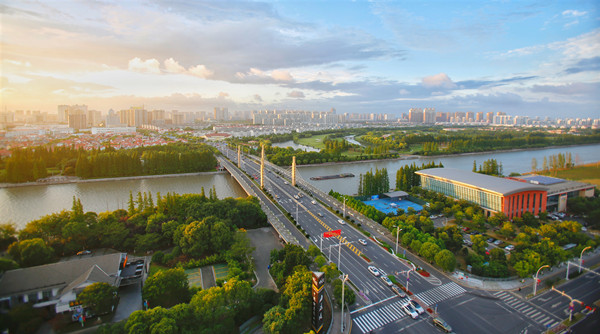A river runs through it
Shaxi preserves the ancient charm of the water towns in East China's Yangtze River Delta
The small group of water towns, dubbed the "Oriental Venice", in East China's Yangtze River Delta, attract tourists from around the world. But water towns were everywhere when I was growing up in the area in the 1980s.
As a child, I used to sail a lacquered washing basin in search of the delicious roots of lotus flowers in the ponds and small lakes dotting the suburbs of Nanjing, capital of Jiangsu province. Those suburbs are now part of the city's Central Business District.
When China started to modernize, the waterways disappeared almost overnight. The few remaining towns have scant numbers of residents, but are over-crowded with tourists.
This is why I was exhilarated to discover Shaxi, a 1,300-year-old town in the suburbs of Taicang, a city affiliated with Suzhou of Jiangsu province. The town is actually closer to Shanghai than Suzhou, only 50 km southwest of Shanghai's Hongqiao airport.
It is a town where residents live a prosperous life and there are few tourists, especially on a weekday. People from Taicang who may spend the weekend in the town are still at work. Other than myself, there are few people in the streets taking photos.
The heart of the town is Qipu River, which is about five meters wide. Traditional houses in the Yangtze River Delta style line the banks of the river. They have dark-tiled roofs, white-painted walls and wooden latticed windows.
Rows of houses on both banks stretch for more than 1.5 kilometers. Because the water level goes up and down in different seasons, houses are all "suspended" on the river, with brick foundations holding them well above the water in early May.
The "suspension" will soon become absolutely necessary because the water level rises from mid-June to mid-July. There is drizzling rain almost every day in this period, known as the "plum rain season" in the Yangtze River Delta because plums ripen at this time.
Water towns in the "plum rain season" provided the backdrop for much romantic literature in ancient China. My favorite poem about water towns, written in the Song Dynasty (AD 960-1279), describes the scene: "Music of the flute comes from a boat in the night; the drizzles are on; people talk on a bridge."
Bridges are necessities for water towns. Shaxi boasts three well-maintained stone-arched bridges from the Qing Dynasty (1644-1911), their names meaning "prosperity", "honesty", and "temple".
Temples first appeared in Shaxi in the latter part of Tang Dynasty (AD 618-907). The town has been a business hub ever since. The town was famous for a big fair in the Yuan Dynasty (1271-1368).
Shaxi, and the city of Taicang sit on the crossroads of the Beijing-Hangzhou Grand Canal and the Yangtze River. The 1,800-km-long canal, completed in the Sui Dynasty (AD 581-618), was the main route of travel between northern and eastern China before modern transportation means were introduced in the 19th century.
Taicang had the largest seaport at the mouth of Yangtze River, where it flows into the Pacific, until deposits at the river bottom triggered the river's minor re-route a century ago.
As a result, Shaxi and also Taicang were prosperous places, especially in the Ming Dynasty (1368-1644) when capitalism was a feature of the economy. The richness of the area was repeatedly described in Plum in the Golden Vase, a novel from the Ming Dynasty about the lives of urban businesspeople.
The novel, undisputedly the greatest piece of erotic literature in Chinese history, describes the luxurious lifestyle of people in an unknown city along the canal. Some researchers argue that the city is actually Taicang, the heart of the area where businessmen made big deals and consumed goods intended for the emperor.
Shaxi people are still successful in terms of business, so the town is in no way anxious to woo tourists. Many expensive cars are parked outside the old town area, where local families still prefer to live.
The facade of each house along the river is small, but when you enter it, you will find that the house is actually a very long but narrow courtyard, with three rows of houses inside.
After the first row of houses, or actually courtyards, along the river, there is a narrow street, then another row of courtyards and yet another street...The whole town spreads out in this way from both banks of the river.
Shaxi has several famous buildings such as the "house of seal, stream and books", and the "blossom bud house", built in the late Ming and Qing dynasties.
In the late Ming Dynasty, intellectuals in the Yangtze River Delta, in the face of Manchurian cavalry coming from the north and the chaos of national politics, focused instead on building their own elaborate houses and gardens. This period has resulted in a number of World Heritage gardens in the Delta area.
As the culture began to center more on the well-being of the individual and one's family, Shaxi produced a number of nationally famous artists and scholars. One of them is Wu Xiaobang (1906-1995), dancer, choreographer, and "father of modern dancing" in China. The centuries-old residence of his family is a museum dedicated to the dancer.
Even more interesting is an exhibition dedicated to Gu Atao (1914-1998) housed in an old residence. Gu was a household name in China during the "cultural revolution" (1966-1976), and the picture of her shaking hands with Mao Zedong is still one of the most famous pictures of the era.
Gu was an illiterate farmer who worked in a private textile factory. She was chosen by Ye Qun, wife of military leader Lin Biao (1907-1971), to be a representative of the mass movement to learn the works of Mao Zedong.
A former match-maker, Gu was extremely eloquent. She made speeches around the country to tell stories about how Mao's works changed her views and life. She didn't have to read from a script. She could not write one. Instead she drew one picture after another on a piece of paper, as reminders during speech.
Her "script", full of her drawings of ducks, cows, fences, etc., was on display in the exhibition, as well as other objects showing the moments of her legendary life.
She became one of the top officials of Jiangsu province, and was only removed from the position when the "cultural revolution" ended in 1976. She went back to Shaxi, and made a living selling ice popsicles in the streets of the old town.
"When we were kids, we used to buy ice popsicles from her. We all knew she was famous, but she did not feel different from any other granny," a resident tells me.
The ups and downs of this old town and its individuals are sure to leave a smile on your face.
wangshanshan@chinadaily.com.cn
Shaxi town. Chen Wen / For China Daily |










